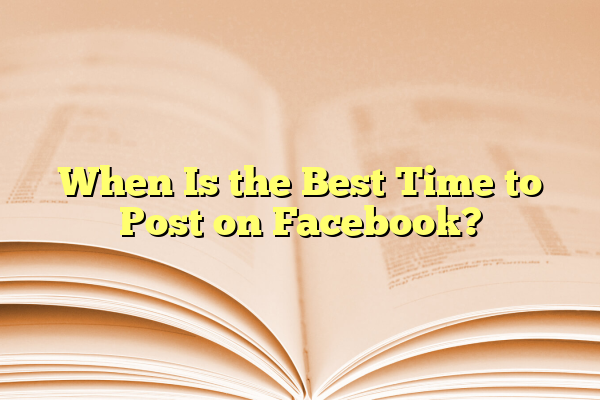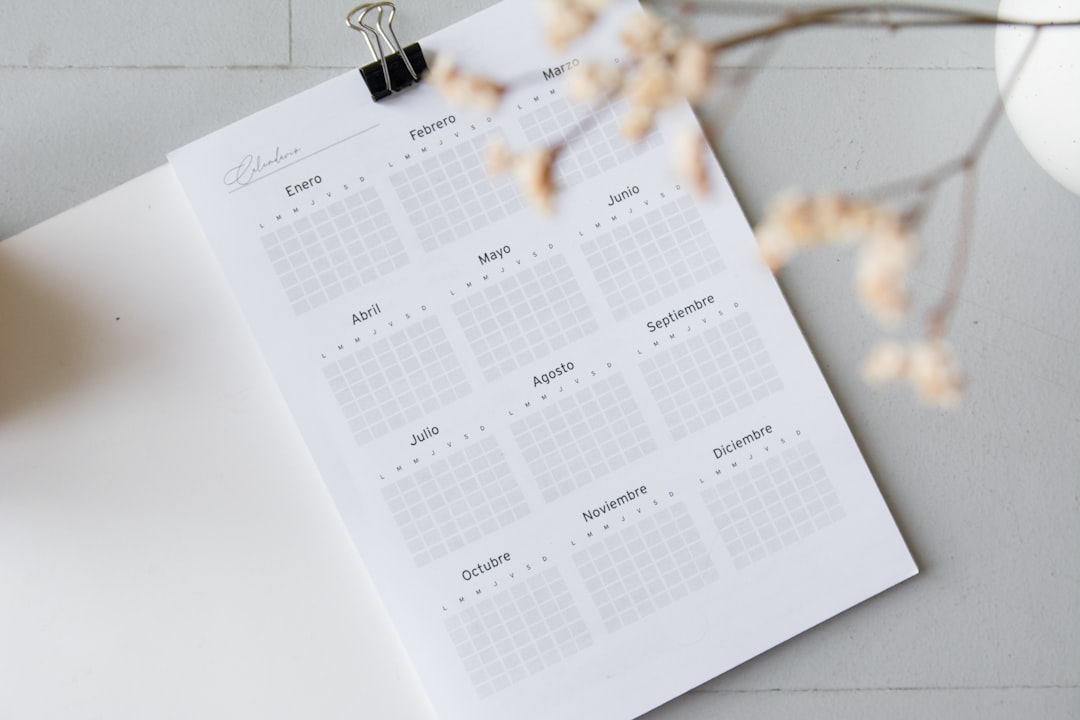
When Is the Best Time to Post on Facebook?
Facebook remains one of the world’s most popular social media platforms, with billions of users interacting daily. For businesses, influencers, marketers, and even casual users aiming for maximum engagement, understanding the best time to post on Facebook is crucial. Posting at the optimal time can significantly increase the visibility of content, leading to better reach, more interactions, and ultimately, higher conversion rates. But identifying that ideal posting time isn’t as easy as one might think—it requires understanding various factors such as audience behavior, time zones, industry-specific trends, and more.
Contents
- 1 Why Timing Matters on Facebook
- 2 The General Consensus on Best Posting Times
- 3 Understanding Your Audience
- 4 How Industry Influences Optimal Timing
- 5 Experimentation and A/B Testing
- 6 Using Facebook Scheduler and Other Tools
- 7 Common Mistakes to Avoid
- 8 Adapting to Algorithm Changes
- 9 Conclusion: There’s No One-Size-Fits-All
Why Timing Matters on Facebook
Facebook’s algorithm determines how and where posts appear in users’ News Feeds. While this algorithm considers many factors, timing remains critical. A post shared when your audience is most active stands a better chance of being seen, liked, commented on, and shared.
Here are the primary reasons timing matters on Facebook:
- Higher Engagement: More users online means a higher potential for likes, shares, and comments.
- Increased Reach: Facebook’s algorithm favors posts with early engagement, helping them appear in more feeds.
- Better ROI: For businesses using paid promotion, posting at the right time ensures ad dollars are used efficiently.
The General Consensus on Best Posting Times
Many studies have been conducted to find the ideal posting times on Facebook. Although the exact timing can vary by audience and industry, research suggests that some time slots consistently show higher engagement levels across different accounts.
According to multiple studies and social media analytics tools, here are some general guidelines:
- Best days: Tuesday, Wednesday, and Thursday typically perform best.
- Best time frames: Late morning (between 9 AM and 11 AM) and early afternoon (1 PM to 3 PM) tend to see more engagement.
- Worst times: Late at night and early morning hours often result in lower reach and engagement.

Data shows that midweek mornings tend to be a ‘sweet spot’ for engagement. That’s when most people check Facebook during breaks, commutes, or lunch hours. Late afternoons on weekdays can also perform well, especially as people wind down their day.
Understanding Your Audience
While general data provides a baseline, the most effective way to determine the best posting time is by understanding your specific audience. Facebook Insights or third-party tools like Hootsuite, Buffer, and Sprout Social allow page managers to track when their user base is most active.
Key metrics and behavior to assess include:
- Time zones: Always consider the geographic location of your target audience. A 9 AM post in New York won’t be effective for an audience largely based in London.
- Activity patterns: Look at historical engagement metrics to observe patterns—when your posts receive the most likes and shares.
- Demographics: Younger audiences may be more active in the evening, while professional audiences are likely engaging during standard business hours.
How Industry Influences Optimal Timing
The nature of your business or niche dramatically affects the best time to post. For example, a B2B tech company may experience the highest engagement during weekday mornings, while a lifestyle blogger might see spikes during weekends or evenings.
Here are some industry-specific insights:
- B2B: Weekdays during business hours (9 AM to 5 PM), especially Tuesday to Thursday.
- B2C: Evenings and weekends often work better as customers are browsing more casually.
- Media and entertainment: Late-night posts may perform well, particularly around TV events or cultural moments.
- Retail: Lunchtime and early afternoons when users are shopping online or comparing products.

Experimentation and A/B Testing
Even with guidelines and data, nothing replaces real-world testing. Social media strategies should always include time-based A/B testing to determine when your audience is most responsive.
Steps to conduct time-based A/B testing include:
- Create two identical posts.
- Publish them at different times and track the engagement and reach.
- Repeat the test over a few weeks to control for daily content fluctuation and algorithm changes.
After gathering sufficient data, adjust your posting schedule accordingly. Make this a quarterly routine to stay aligned with changing audience behavior and platform updates.
Using Facebook Scheduler and Other Tools
Facebook Business Suite provides native scheduling tools that can help you optimize your timing strategy. In addition, third-party platforms like Buffer, Later, and Hootsuite allow for advanced performance analytics, post sequencing, and audience behavior insights.
Advantages of using scheduling tools:
- Consistency: Even if your team isn’t online, your posts will be published as planned.
- Efficiency: Schedule a week’s worth of posts in a single day.
- Analytics: Access deeper data to refine your optimal time slots and posting frequency.
Common Mistakes to Avoid
Many well-intentioned content creators miss out on optimal engagement because they commit timing errors. Avoiding these common mistakes can help your posts perform to their potential:
- Posting only during business hours: Your audience may be more active outside of traditional office times.
- Ignoring weekends: Engagement can spike on Saturdays and Sundays, depending on your niche.
- Not adjusting for daylight saving or seasonal changes: These can impact daily activity patterns.
Adapting to Algorithm Changes
Facebook’s algorithm is constantly evolving, making it essential to stay adaptable with your posting schedule. What works today may not work next month, so being flexible is vital. Follow Facebook’s official updates, attend digital marketing webinars, and keep an eye on analytics regularly.
Additionally, focus on improving content quality. Even perfectly timed posts may fail if the content fails to resonate. A combination of clever timing and valuable content is what drives sustainable success on the platform.
Conclusion: There’s No One-Size-Fits-All
Determining the best time to post on Facebook isn’t a simple equation—it requires a blend of analytical rigor, strategic planning, and adaptability. While studies offer helpful benchmarks, your own audience behavior is the most reliable guide. Regularly reviewing analytics, conducting time-based experiments, and leveraging automation tools can help ensure that your content reaches the right people at the right time.
In the end, long-term Facebook success isn’t just about when you post—it’s about posting the right content at the right time for the right audience.
